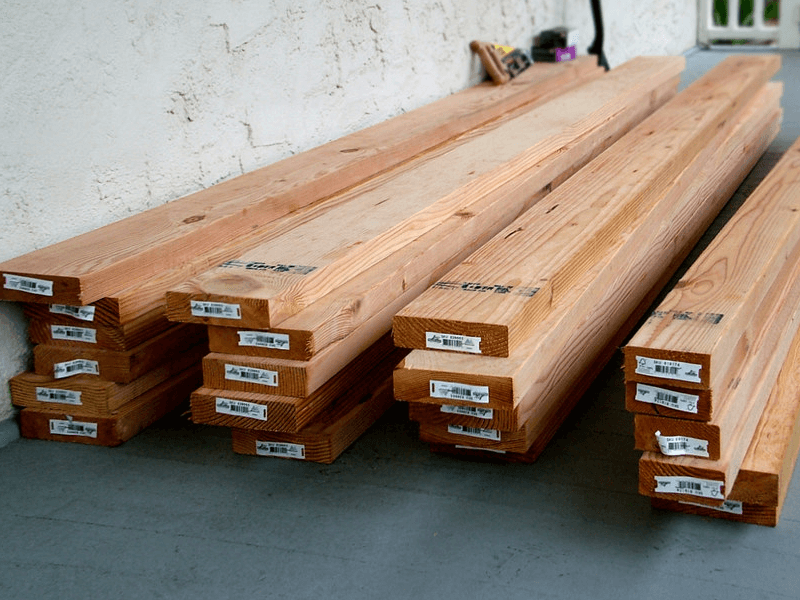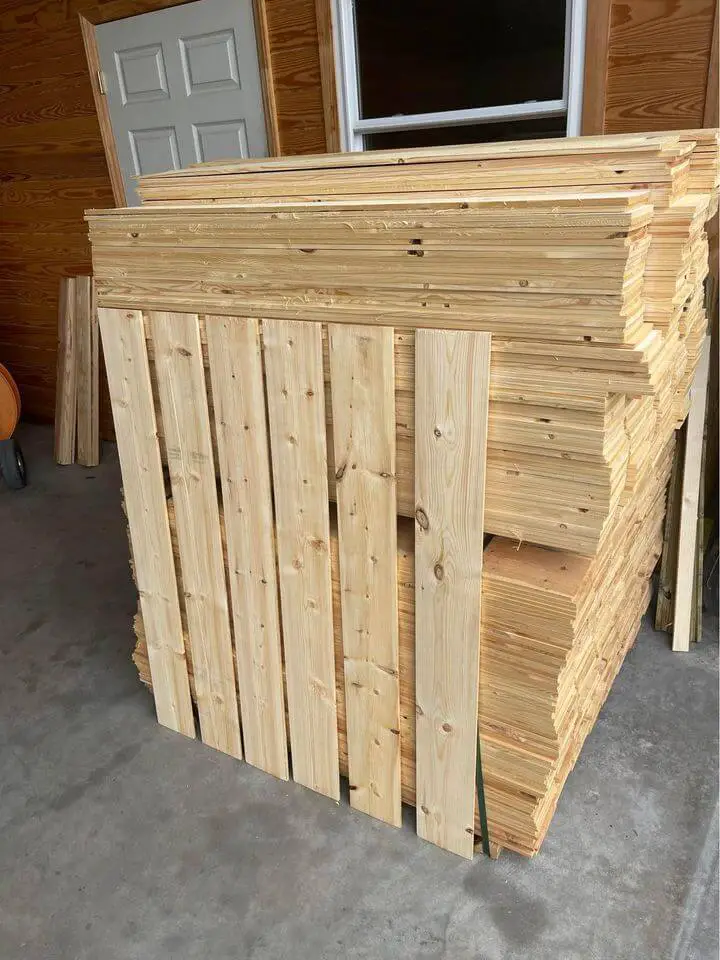Are you wondering what softwood to use for your next project? You may want to consider the Douglas fir or spruce. They are both conifers, but each has its unique characteristics.
Like other conifers, the Douglas fir tree has needle-like leaves. Each of its needles is attached directly to the branch. The needles are sharp and pointed.
In spruce, the needles are attached directly to the branch as well. However, they are square-shaped, and they tend to break apart easily.
Although the Douglas fir and spruce belong to the same family of trees, their wood has different properties. In this article, we’ll compare both kinds of wood’ strength, durability, workability, and maintenance requirements. The comparison is aimed at helping you make an informed decision on the two kinds of wood that will work for you.
Douglas Fir and Spruce Comparison
Douglas Fir Vs. Spruce: Strength
Both the Douglas fir and spruce are strong woods. However, the Douglas fir is stronger than spruce. It is a dense wood with an average weight of 32lbs/ft3. It’s also harder than spruce and ranks 620 lbf on the Janka scale.

Spruce weighs about 27lbs/ft3 and ranks at 510 lbf on the Janka scale; its hardness is relatively low compared to that of Douglas fir. The Douglas fir has a maximum crushing strength of 6950 psi, while spruce has a crushing strength of 5550 lb. /in2.
The Douglas fir is less prone to shrinking compared to spruce. It has a shrinkage percentage of 7.3%, while spruce has a 7.5%.
Douglas Fir Vs. Spruce: Durability
The Douglas fir is denser and hence more durable. It is more resinous than spruce and has a moderate resistance to decay. Unfortunately, it is more susceptible to insect attacks.
Douglas fir is also very flexible. The wood may shrink or expand as it dries, but it eventually regains its shape. On the contrary, spruce is less flexible and tends to split easily when nailed or screwed.
Douglas fir can also withstand outdoor weather better than spruce. It’s also incredibly stable; it dries faster and is less likely to check, warp, or split during drying.
Douglas Fir Vs. Spruce: Workability
Douglas fir has good workability. It machines well but has a blunting effect on cutters. It glues, stains, and finishes nicely.
Unlike spruce which tends to break easily under stress, the Douglas fir is highly resistant to splitting. It also has an excellent screw holding capacity.

Knotless spruce has good workability with hand and powered tools. It also has an excellent holding capacity for nails and screws. Like Douglas fir, spruce species such as the Sitka tend to dull saw blades quickly.
Douglas Fir Vs. Spruce: Maintenance
Both the Douglas fir and spruce require some maintenance routine. However, spruce has more maintenance requirements than Douglas fir. Besides the usual cleaning and polishing, spruce must be refinished every few years.
The Douglas fir is naturally more resistant to outdoor weather than spruce. However, it is not completely water-resistant. Waterproofing this wood is an effective way of protecting it from water damage.
Douglas Fir Vs. Spruce: Uses
Spruce is much lighter and softer than Douglas fir, making it the ideal wood for building boats, ships, and airplane panels. Most species have exceptional tonal properties and are therefore used as a tone wood. These species are mainly used to make musical instruments such as guitars and violins. Additionally, spruce has a decorative grain pattern, which makes it ideal for creating veneer.
The strength-to-weight ratio of Douglas fir makes it suitable lumber for construction projects. It’s also used to make doors, floors, and windows.
Douglas Fir Vs. Spruce: Cost
Spruce wood is categorized into two groups; the construction grade and quarter sawn grade. Knotty spruce falls under the construction grade and typically sells at lower prices. On the other hand, quarter-sawn spruce is clean, free from knots and splits. It is more expensive than construction-grade spruce.
Douglas fir is cheaper than spruce since it is more readily available. A board of Douglas fir can retail at $1.80-$4.50, while that of Sitka spruce can retail at $11.
Conclusion
Both the Douglas fir and spruce are softwoods belonging to the conifer family. The Douglas fir is denser and ranks higher on the Janka scale than spruce. It also has a higher maximum crushing strength and a lower shrinkage percentage. It is, therefore, stronger than spruce.
The Douglas fir is more resinous than spruce; thus, it is more durable. This wood is moderately resistant to decay and can withstand outdoor weather better. Unlike spruce which tends to split easily when nailed or screwed, the Douglas fir is more stable.
Both kinds of wood (Douglas Fir Vs. Spruce) have good workability but have a blunting effect on cutters. They both require regular maintenance, but spruce must be refinished every few years. Douglas fir is readily available in most regions and is cheaper than spruce.


Great article and thanx! I live in Germany and the German’s refer to Douglas Fir as simply Douglas and don’t consider it fir.
You’re welcome! I’m glad you found the article helpful. It’s interesting to hear that in Germany, Douglas Fir is commonly referred to as “Douglas” without considering it as a true fir. Common names for trees can vary between regions, and sometimes different naming conventions or local preferences emerge. Language and common usage can vary, and it’s always interesting to explore these differences. If you have any more questions, feel free to ask!